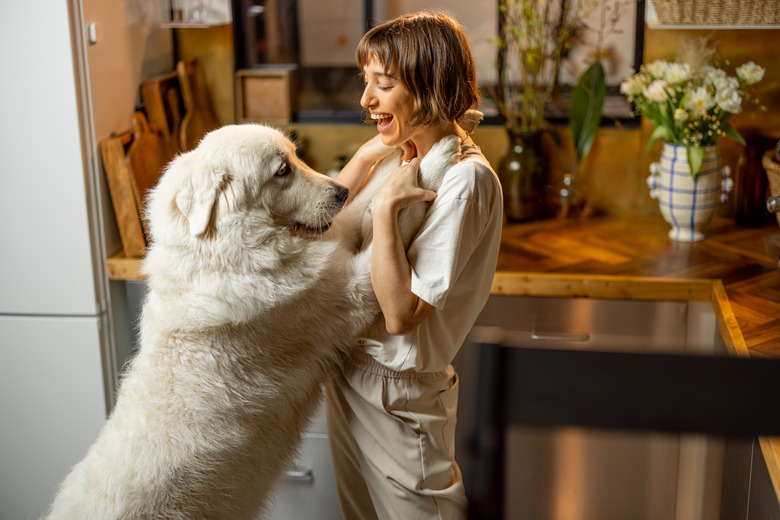How Dangerous Is Bladder Stone Surgery In Dogs? A Vet Explains Bladder Stone Surgery Complications And Recovery
Bladder stones, also called uroliths, are somewhat common in dogs. Treatment options for removing these stones will many times include surgery, although they can sometimes be removed with urohydropropulsion (flushing out very small stones), broken up with shock waves (lithotripsy), or dissolved with a prescription diet. Bladder stone surgery in dogs can cause complications, including infection, contamination of the abdomen with urine, and missed stones, which sometimes necessitates a second surgery.
What is a cystotomy in dogs?
What is a cystotomy in dogs?
A cystotomy is any surgery that involves making an incision in the bladder. This procedure may be done to remove a bladder stone or stones or to take a biopsy. It might also be done as part of repairing trauma to the bladder or correcting bladder defects.
In some cases where the urinary bladder has a urethral obstruction with bladder crystals, urinary debris, or stones, a dog might need to have a urinary catheter inserted into the urethra to relieve the blockage. It doesn't take long for a blocked bladder to fill with urine to the point of pain with the potential for rupture. The inability to urinate is a life-threatening emergency.
Types of bladder stones in dogs
Types of bladder stones in dogs
The condition of having bladder stones is called urolithiasis. There are four types of bladder stones in dogs: struvite, calcium oxalate, urate, and purine. However, 85% of bladder stone cases are due to struvite and calcium oxalate. The only way to tell what type of stone your dog has is for your veterinarian to submit it to a laboratory for analysis.
- Struvite: Made of magnesium ammonium phosphate, this is the most common type of bladder stone in dogs. It forms in alkaline urine and is usually secondary to urinary tract infections (UTIs). Normally, dog urine is slightly acidic. (Your dog's urine pH is evaluated as part of a urinalysis.) Struvite stones are more prevalent in female dogs and in breeds such as miniature schnauzers, Shih Tzus, Yorkshire terriers, dachshunds, Labrador retrievers, and bichon frises. Struvite stones tend to be visible on radiographs (X-rays). In some cases, struvite stones can be dissolved by putting a dog on a special diet. But depending on the situation, such as with large stones, they may need to be removed surgically.
- Calcium oxalate: This is the second most common type of stone. Miniature schnauzers, Lhasa apsos, Yorkshire terriers, miniature poodles, Shih Tzus, and bichon frises are more prone to calcium oxalate stones. Diet, genetics, or underlying disease can cause them to form. They are also more common in male dogs. These stones are usually visible on X-rays. Oxalate stones must be removed surgically and cannot be dissolved by a diet change.
- Urate: About 5% of bladder stones in dogs are urates. Breeds that are prone to them are Dalmatians, English bulldogs, and black Russian terriers, with male dogs more likely to be affected. This type of stone tends to be invisible on X-rays, so an ultrasound may be performed. Urates can be dissolved with a prescription diet. Dogs with certain types of liver disease can develop urate stones.
- Cystine: This very rare type of stone is due to genetics and is almost always in male dogs. Newfoundlands, Labradors, Australian cattle dogs, and miniature pinschers are more prone to the genetic mutation that causes cystine stones. They can be dissolved with a special diet.
- Purine: Within the category of purine stones are urate and xanthine. Xanthine stones can form in dogs being treated for urate stones. This type of stone is usually invisible on X-rays.
How dangerous is bladder stone surgery in dogs?
How dangerous is bladder stone surgery in dogs?
Complications do not occur very often. When bladder stone surgery is performed, it's because the potential benefits to your dog outweigh the risks. As with any procedure involving anesthesia and surgery, there is always the possibility of complications.
Infection
One possible complication of surgery is infection. This can occur by introducing bacteria from the outside, such as when a pet licks the surgical site. Infection can also occur if urine containing bacteria spilled into the abdomen during surgery. Infection is controlled with antibiotics.
Anesthetic risks
Anesthetic risks must be considered whenever surgery is performed. General anesthesia causes respiratory and circulatory depression, or a slowing of breathing and heart rate. These conditions can culminate into full cardiac or respiratory arrest.
Anesthesia is eliminated by the liver and kidneys. Animals experiencing decreased organ function may have trouble metabolizing anesthesia and require special considerations when being anesthetized. Before your dog undergoes an anesthetic procedure, your veterinarian will recommend pre-anesthetic bloodwork and sometimes chest X-rays to minimize risk.
Pain
Bladder surgery is painful, and pain must be adequately controlled. Post-surgical pain is usually controlled by the administration of pain medications, which can include opioids, non-steroidal anti-inflammatories (NSAIDs), and other types of medication.
Urine leakage
Urine leakage into the abdomen during and after surgery can cause peritonitis, a life-threatening infection of the abdomen. Also, if the bladder incision does not hold — a complication called dehiscence — urine can leak into the abdomen. Urine leakage after surgery will require a secondary surgery to correct the gap in the bladder wall. However, this complication is rare.
Missed stones
Stones can be missed during the surgery, necessitating a second surgery or another removal method, such as manual manipulation or dissolution. If a stone is missed, it is generally significantly smaller than those removed by surgery and can usually be medically managed.
Recovery from bladder stone surgery in dogs
Recovery from bladder stone surgery in dogs
Your veterinarian will provide you with detailed instructions about post-operative care. Make sure to follow them closely.
- Restrict your pet's activity: For at least two weeks, your pet needs to be kept inactive to give the bladder, body wall, and skin a chance to heal. Too much activity can cause sutures to come out, which can cause the life-threatening situation of urine leaking out of the bladder's incision. Short leash walks are fine depending on how your dog behaves when on a walk.
- Monitor urine output: Due to the inflammation that surgery causes, it's not unusual for your dog to urinate more frequently, strain to urinate, have some urinary incontinence, or even have hematuria (blood-tinged urine) for the first few days after surgery. If your dog acts uncomfortable after urinating or if you're unsure whether or not their urine's appearance is OK, call your veterinarian right away.
- Provide pain medication: Your veterinarian will send home pain medication to keep your dog comfortable during recovery, especially during the first week. If your dog's pain is not controlled, this can impair healing and cause suffering and distress to your dog. Signs of pain include restlessness, not eating, crying, acting uncomfortable, panting, flattened ears, growling when touched, and a hunched posture. Contact your veterinarian immediately if your dog seems to be in pain after surgery.
- Prescription diet: Your dog will likely be placed on a special diet, potentially for life, to reduce the likelihood of stone formation. Going forward, do not feed your pet anything other than their special diet. Talk to your veterinarian before offering any treats, including fruits and vegetables, as some of these can alter urine pH.
- Water intake: In the days following surgery, make sure that your pet is drinking water as usual. If they're not, they can get dehydrated. Water can also be added to their food.
- Monitor the incision: The skin incision can become infected if your dog licks it. This can also cause stitches to come loose. If your dog licks their incision at all, they must wear an e-collar while the incision heals.
If your pet is having complications after surgery or you're not sure about something, contact your veterinarian right away. If this occurs during the middle of the night or on a holiday when your veterinary hospital is closed, call an emergency animal hospital.
The bottom line
The bottom line
Bladder stones are somewhat common in dogs, often necessitating surgical removal. As with any surgery, a cystotomy to remove bladder stones can have complications, such as infection or stitches coming out. If your dog needs bladder stone surgery, be sure to follow all post-op directions from your veterinarian to increase the chance of a speedy recovery.



